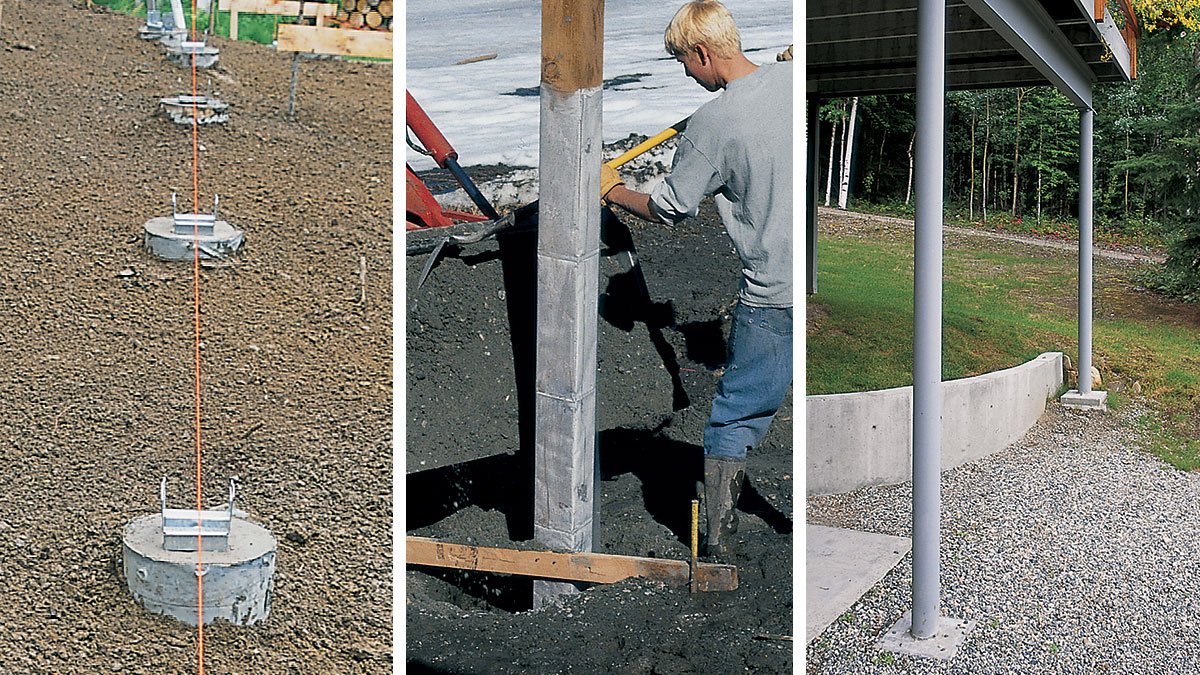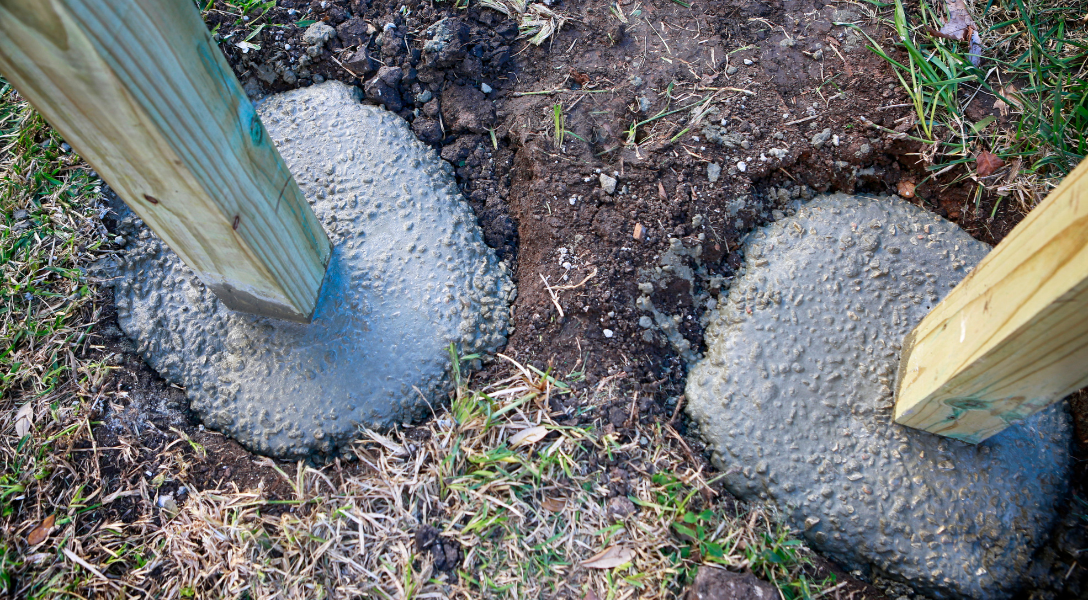From Idea to Concrete: The Critical Duty of Deck Footings in Sturdy and Safe Decks
From Idea to Concrete: The Critical Duty of Deck Footings in Sturdy and Safe Decks
Blog Article
Make The Most Of the Life-span of Your Deck With Trustworthy and Solid Footings
As property owners, we spend a significant quantity of time and sources right into creating the best exterior room. A deck is usually the centerpiece of that area, supplying a location to loosen up, captivate, and delight in the elegance of nature. Nonetheless, in order to totally make the most of the life expectancy of your deck, it is important to make sure that it is developed on reputable and strong grounds. These footings form the structure of your deck, supplying stability and assistance, and are frequently the difference between a deck that lasts for years and one that needs consistent fixings. In this conversation, we will explore the value of reputable footings, the different sorts of strong footing materials, correct installation strategies, and exactly how to preserve and examine your deck's grounds to protect against damages. So, whether you remain in the process of looking or constructing a brand-new deck to boost the long life of your existing one, join us as we uncover the keys to a deck that stands the test of time.
Significance of Reliable Grounds
When it comes to taking full advantage of the life-span of your deck,The importance of dependable grounds can not be overstated. The footings offer as the foundation whereupon the whole framework relaxes, providing stability and support. Without a solid ground, the deck is prone to changing, sinking, and even collapse, which can dramatically lower its life expectancy and posture safety risks.

Selecting the best kind of footing is also crucial. The most usual types include concrete grounds, helical piers, and sonotubes. Variables such as dirt conditions, climate, and the size of the deck will certainly establish the most suitable choice. Employing a specialist to assess the soil, style the grounds, and make certain proper setup is extremely advised.
Buying trustworthy grounds might include extra expense and effort upfront, however it is a beneficial investment that will certainly add to the long-lasting longevity and safety and security of your deck. By making certain a solid structure, you can appreciate your deck for years ahead, knowing that it is constructed to withstand the test of time.
Sorts Of Solid Ground Products
To make sure the stability and long life of your deck, it is important to consider the various kinds of solid footing products offered. The option of footing material is critical as it supplies the required support and security to endure the weight and load of the deck framework.
One trusted and typical material used for deck grounds is concrete. Concrete grounds are resilient and provide excellent stability. They can be poured straight right into the ground or utilize precast concrete footings for simpler installation. Another alternative is helical piers, which are steel shafts with helical plates that are screwed into the ground. These piers use excellent load-bearing ability and can be made use of in various dirt problems.
For locations with bad soil conditions, such as expansive or loose dirts, a footing system that makes use of steel or composite piers may be preferred. Deck Footings. These piers are driven deep right into the ground to get to steady dirt layers, making sure the stability of the deck
Sometimes, deck footings can additionally be constructed making use of treated lumber. It is important to guarantee that the lumber is effectively treated to resist rot and decay caused by direct exposure to wetness and bugs.
When choosing a ground product for your deck, it is critical to think about aspects such as soil conditions, climate, and neighborhood building ordinance. Consulting with a specialist specialist or structural designer can help establish the most ideal footing material for your details deck job.
Proper Setup Strategies for Footings
Taking into consideration the importance of guaranteeing stability and longevity for your deck, it is important to recognize the correct installation methods for grounds. The success of your deck task depends greatly on the honesty of its foundation, which is why complying with the proper installation techniques is critical.
Primarily, it is essential to figure out the appropriate size and depth of the grounds based upon the layout and lots requirements of your deck. This information can be obtained from building codes or via consultation with an architectural designer. As a basic policy, grounds ought to be at least 12 inches in size and prolong below the frost line to stop settling or shifting.
Once the measurements are developed, the next action is excavation. Digging the holes for the grounds must be finished with accuracy, making certain they are deep enough and have a degree bottom. Deck Footings. This will supply a stable base for the grounds
To even more boost the stability of the grounds, it is suggested to make use of a concrete combine with a toughness of a minimum of 3,000 psi. This will make certain the footings can withstand the weight and pressures exerted by the deck.
Throughout setup, it is important to maintain the footings degree and lined up properly. This can be accomplished by utilizing a level and string lines to guide the positioning of each footing.
Maintaining and Evaluating Your Deck's Grounds
Regular upkeep and complete examinations are vital for ensuring the lasting stability and safety and security of your deck's grounds. helpful resources Over time, grounds can catch wear and tear, climate condition, and dirt movement, which can endanger their architectural integrity. To take full advantage of the life-span of your deck's grounds, it is important to apply a visit this site regular upkeep regimen and conduct complete examinations.

In addition, it is essential to examine footings for any signs of damage or deterioration. This includes checking for cracks, splits, or collapsing concrete, along with any signs of activity or negotiation. Any kind of problems should be addressed immediately to avoid more damage and make sure the stability of the deck.
Moreover, it is recommended to check the surrounding soil for any kind of indicators of erosion or moving. Dirt activity can influence the stability of the footings, so it is necessary to resolve any soil-related issues quickly.
Indications of Ground Damage and How to Address Them
Footing damages can position significant risks to the stability and safety of your deck, making it vital to without delay determine and address any type of indicators of deterioration. One of the most common signs of footing damage is clearing up or sinking of the deck. This can happen because of dirt disintegration, insufficient footings, or bad building practices. It is important to take instant action to avoid further damage if you discover that your deck is uneven or leaning. Another sign of footing damage is falling apart or splitting of the concrete grounds. This can be created by freeze-thaw cycles, extreme wetness, or bad high quality concrete. It is important to have them examined and repaired by a specialist if you observe any kind of fractures or wear and tear in the footings. Additionally, if you notice any movement or changing of the deck, such as a deck that feels unsteady when walked on or totters when weight is applied, maybe an indication of footing damage. view it In such instances, it is suggested to seek advice from with a professional specialist or a structural designer to analyze the degree of the damages and establish the suitable strategy. Remember, resolving footing damages immediately can help make sure the long-lasting stability and safety and security of your deck.
Verdict
To conclude, making sure the integrity and toughness of footings is vital for taking full advantage of the life expectancy of your deck. By utilizing strong footing materials and correctly installing them, you can stop damages and keep the security of your deck. Regular maintenance and assessments will certainly also help determine any type of indicators of footing damage and enable for timely repair services. Ultimately, taking these steps will assist maintain the honesty and longevity of your deck.
These grounds form the structure of your deck, supplying stability and support, and are usually the difference in between a deck that lasts for years and one that needs constant fixings. In this conversation, we will explore the relevance of reliable grounds, the different kinds of strong footing products, appropriate setup techniques, and just how to preserve and examine your deck's grounds to protect against damage.Normal upkeep and complete assessments are necessary for guaranteeing the long-term security and safety and security of your deck's footings. Keep in mind, dealing with footing damages immediately can assist guarantee the long-term security and safety and security of your deck.
By using strong footing products and properly installing them, you can prevent damages and maintain the security of your deck.
Report this page